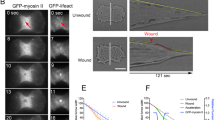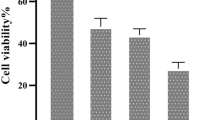Abstract
NUMEROUS papers from these laboratories have dealt with the production of proliferation-promoting factors ('intercellular wound hormones') by cells subjected to various injuring agents. It seems warranted to believe that these substances are produced by living, injured cells as a response to injury and are not simply dead-cell disintegration products1. The question of the nature of these materials is of great interest. It might be assumed that they are merely normal growth substances produced or released in greater quantities under the conditions of injury, or it is possible that they represent specific 'injury substances'. Two lines of inquiry have been undertaken to answer the question: (1) chemical and spectrographic studies, which suggest a nucleic acid-like nature for the wound hormones and which definitely show that substances of this type are produced in greater quantity as a result of injury2 ; (2) comparative growth studies, on the wound hormone preparations and known growth substances. The present note is concerned with the latter.
This is a preview of subscription content, access via your institution
Access options
Subscribe to this journal
Receive 51 print issues and online access
$199.00 per year
only $3.90 per issue
Buy this article
- Purchase on Springer Link
- Instant access to full article PDF
Prices may be subject to local taxes which are calculated during checkout
Similar content being viewed by others
References
Loofbourow, Dwyer and Cronin, Biochem. J., 35, 603 (1941).
Loofbourow, Cook and Stimson, NATURE, 142, 573 (1938). Cook, Loofbourow and Stimson, Atti X° Cong. Intern. Chim., 5, 26 (1939).
Reader, Biochem. J., 21, 901 (1927).
Cook and Cronin, Studies Inst. Divi ThomÅ", 3 (1941) in the press.
Williams and Saunders, Biochem. J., 28, 1887 (1934).
Author information
Authors and Affiliations
Rights and permissions
About this article
Cite this article
COOK, E., CRONIN, A. Proliferation-promoting Activities of Extracts from Ultra-violet Injured Yeast Cells and of Bios Components. Nature 150, 93–94 (1942). https://doi.org/10.1038/150093a0
Issue Date:
DOI: https://doi.org/10.1038/150093a0
This article is cited by
-
Wound healing in higher plants. II
The Botanical Review (1952)
Comments
By submitting a comment you agree to abide by our Terms and Community Guidelines. If you find something abusive or that does not comply with our terms or guidelines please flag it as inappropriate.



